The life cycle of the angiosperms is very similar to ferns. In contrast to ferns the angiosperms (and conifers) produce two kinds of spores: those that produce male gametophytes and those that produce female gametophytes. The male gametophytes (pollen) are transported in various ways (wind, insects, etc) to the female receptive site. The female gametophyte on the other hand, is retained on the parent plant
The Angiosperm Life Cycle
| Most of the plants around us are flowering. Like ferns, the dominant part of the life cycle is the sporophyte. | 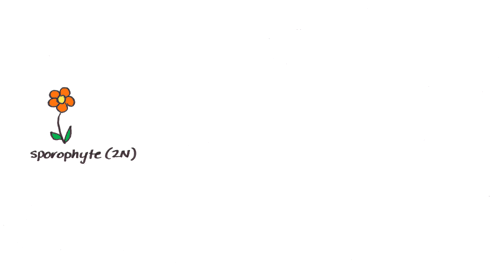 |
| Flowering plants produce haploid spores. Microspores are produced within the anthers whereas the megaspores are produced within the ovule. | 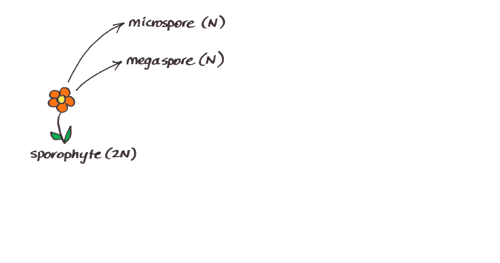 |
| The microspores divide to produce the male gametophyte (pollen). | 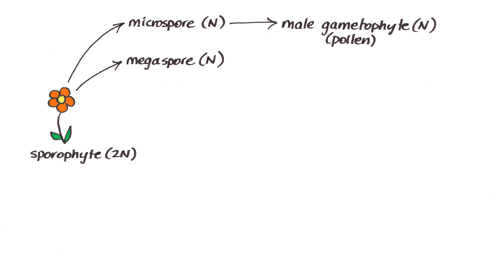 |
| The megaspore develops into a female gametophyte within the ovule. The ovule is retained within the ovary. | 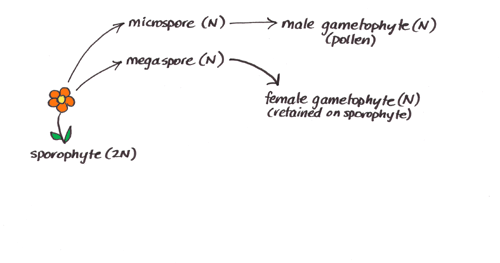 |
| Within the female gametophyte an egg cell develops. You should be able to identify all of the components of the pistil; if not a review of the previous section may help. | 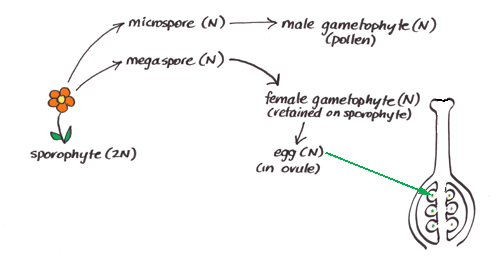 |
| Pollen is released and distributed by wind or other vector (bees, butterflies, etc). Some may end up on the stigma of a receptive flower. | 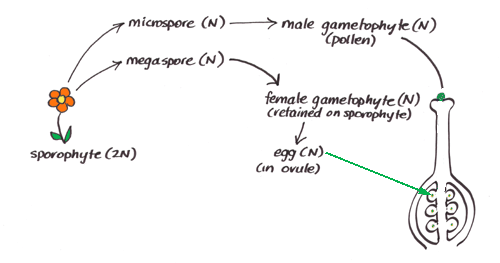 |
| The pollen germinates to produce a tube which digests its way through the stigma and down the style. | 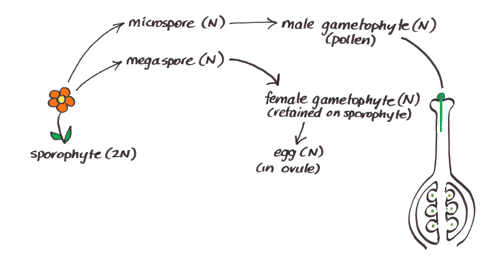 |
| ……the pollen tube grows, carrying nuclei toward the ovary. | 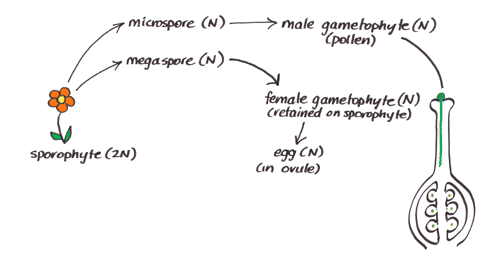 |
| The pollen tube reaches the ovule. | 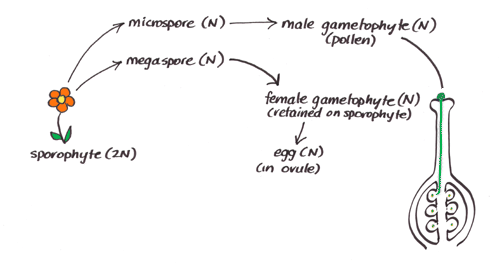 |
| Once the pollen tube is in close proximity to the egg, two sperm cells are released. |
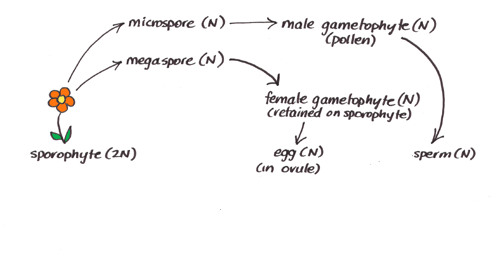 |
| An egg and sperm fuse to produce a zygote. the second sperm fuses with other nuclei within the female gametophyte. This produces tissue called endosperm. |
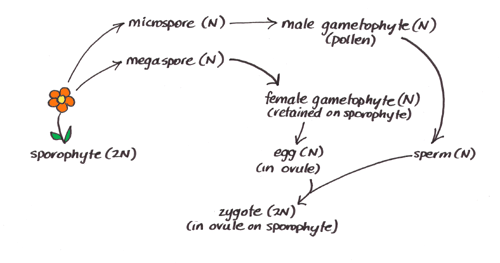 |
| The zygote remains in the ovule within the ovary of the pistil. | 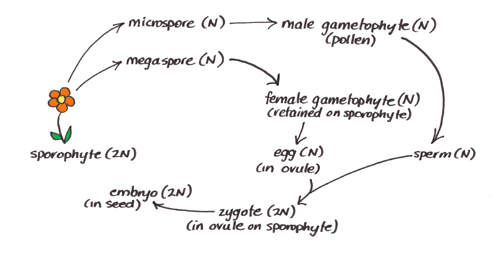 |
| The zygote develops into the embryo. The ovule becomes the sees; the outer part of the ovule (integument) becomes the seed coat. Where would the endosperm be? |  |
| The seed germinates and embryo develops into a new sporophyte. | 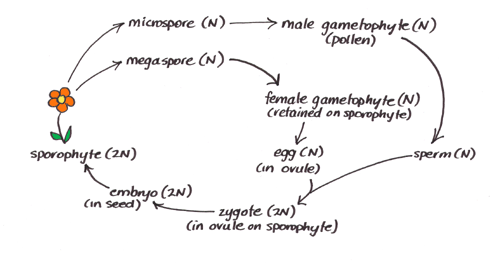 |
